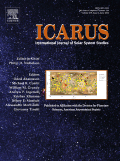
ICARUS
Scope & Guideline
Charting New Territories in Astronomy and Astrophysics.
Introduction
Aims and Scopes
- Planetary Atmospheres and Climatology:
Research on the atmospheres of various celestial bodies, including Mars, Venus, and Titan, focusing on their dynamics, chemical composition, and climate patterns. This includes studies on atmospheric escape, dust storms, and seasonal variations. - Geology and Surface Processes:
Investigations into the geological features and processes shaping planetary surfaces, such as impact cratering, volcanism, erosion, and sedimentation. This encompasses studies of landforms on Mars, the Moon, and other planetary bodies. - Astrobiology and Habitability:
Exploration of the potential for life beyond Earth, including the study of organic compounds, water presence, and environmental conditions that could support life on planets and moons within our solar system. - Planetary Missions and Instrumentation:
Reports on findings from various planetary missions, including Mars rovers and orbiters, and the development and application of new scientific instruments for planetary exploration. - Astrobiology and Exoplanet Research:
Research addressing the conditions for life beyond Earth, including the study of exoplanet atmospheres, biosignatures, and the implications for planetary habitability. - Planetary Dynamics and Formation:
Studies on the formation and evolution of planetary bodies, including simulations of planetary dynamics, impact events, and the structural characteristics of asteroids, comets, and moons.
Trending and Emerging
- Mars Habitability and Water Studies:
There is a rising trend in research focusing on the habitability of Mars, particularly studies examining past and present water activity, including investigations into subsurface ice, ancient lakes, and the role of liquid water in shaping Martian geology. - Planetary Protection and Sample Return Missions:
With missions like Mars Sample Return and the OSIRIS-REx mission gaining prominence, there is a notable increase in research addressing planetary protection protocols, contamination concerns, and the implications of sample return for astrobiology. - Machine Learning and Data Analysis Techniques:
The application of machine learning and advanced data analysis techniques in planetary science is on the rise, facilitating the interpretation of large datasets from missions and improving classification and mapping of planetary features. - Cryovolcanism and Subsurface Oceans:
Emerging research on cryovolcanism, particularly in relation to icy bodies such as Europa and Enceladus, is gaining attention as scientists investigate the potential for subsurface oceans and their implications for habitability. - Astrobiological Implications of Planetary Studies:
There is an increasing focus on the astrobiological implications of planetary research, particularly regarding the potential for life in extreme environments, the role of organic compounds, and the significance of water ice in habitability assessments.
Declining or Waning
- Traditional Astrometric Studies:
Research focused on classical astrometry and orbital dynamics of celestial bodies has become less prominent, as advancements in technology and computational methods have shifted focus towards more complex simulations and modeling. - Static Geological Surveys:
The publication of static geological surveys that do not heavily incorporate dynamic modeling or advanced imaging techniques has decreased, as the field moves towards more integrative approaches combining various data types. - Basic Mineralogy Studies:
While foundational mineralogical studies are still important, there has been a shift towards studies that integrate mineralogy with broader planetary processes, reducing the publication of standalone mineralogical analysis. - Meteorite Characterization:
Research specifically focusing on the characterization of meteorites, while still relevant, has seen a decline as the community increasingly emphasizes in-situ analysis and the geological context of meteorites in planetary exploration.
Similar Journals

Geosciences
Bridging Ideas and Discoveries in Earth Sciences.Geosciences is a prestigious open-access journal published by MDPI, dedicated to advancing research in the field of Earth and Planetary Sciences. Since its inception in 2011, this journal has fostered a collaborative environment for the dissemination of innovative ideas and findings, contributing significantly to the academic community's understanding of complex geological processes. The journal has achieved a commendable 2023 ranking in the second quartile (Q2) within its category, highlighting its impact and relevance in the field, with a Scopus rank of #41 out of 195 journals, placing it in the 79th percentile. With an aim to span a broad range of topics from environmental geology to planetary exploration, Geosciences is pivotal for researchers, professionals, and students looking for an accessible platform to share their work and stay informed of the latest developments. As a fully open-access journal, it ensures that high-quality research is freely available, fostering greater dissemination of knowledge across the globe.

EARTH PLANETS AND SPACE
Advancing Knowledge in Geosciences and Planetary ExplorationEARTH PLANETS AND SPACE, published by Springer and based in Switzerland, is a distinguished journal that plays a pivotal role in advancing the fields of Earth and planetary sciences. With an impactful presence in both geology (Q1) and space and planetary science (Q2), this journal is increasingly recognized for its contributions to understanding complex geoscientific processes and extraterrestrial phenomena. The journal has been a vital resource for researchers since its inception in 1996 and is anticipated to continue this legacy until at least 2024. It ranks impressively within the Scopus database, holding the 53rd position out of 321 in Earth and Planetary Sciences for Geology and the 30th position out of 104 for Space and Planetary Science, reflecting a robust percentile standing of 83 and 71, respectively. With open access options available, EARTH PLANETS AND SPACE makes cutting-edge research more accessible to a global audience, fostering collaboration and innovation. This journal is essential for anyone seeking to deepen their knowledge or stay current with trends in Earth sciences and planetary exploration.

Planetary Science Journal
Charting New Frontiers: Where Research Meets the StarsThe Planetary Science Journal, published by IOP Publishing Ltd in the United Kingdom, stands at the forefront of research in the fields of planetary science, astronomy, and geophysics. With its open access model established since 2020, this journal aims to democratize access to groundbreaking findings that explore the complex interactions between celestial bodies and their atmospheres, geology, and climates. Recognized for its high quality, the 2023 impact factor places the journal in the prestigious Q1 category across multiple disciplines, including Astronomy and Astrophysics, Earth and Planetary Sciences, and Space and Planetary Science. Ranked favorably among its peers, with notable scores in Scopus rankings, the journal seeks to contribute significantly to advancing our understanding of planetary systems and their formation, encouraging interdisciplinary collaboration among researchers, professionals, and students alike. By fostering a community of innovation and inquiry, the Planetary Science Journal is committed to publishing pioneering research that addresses critical questions of our universe.

JOURNAL OF ASTROPHYSICS AND ASTRONOMY
Unraveling the Secrets of Space and Time.JOURNAL OF ASTROPHYSICS AND ASTRONOMY, published by the Indian Academy of Sciences, stands as a pivotal resource for researchers and professionals in the fields of astrophysics and astronomy, with a rich history of publication dating back to 1980. This esteemed journal aims to disseminate high-quality research, fostering advancements in how we understand celestial phenomena, space environments, and planetary sciences. With a current Impact Factor that places it in the Q3 category for both Astronomy and Astrophysics and Space and Planetary Science, it maintains a crucial role in the global academic community, particularly within India. Although not an open access journal, its scholarly contributions are vital for both emerging and established researchers striving to push the boundaries of our knowledge in the cosmos. The journal is indexed in Scopus, ranking 56th in Astronomy and Astrophysics and 72nd in Space and Planetary Science, reflecting its ongoing significance and reach in the scientific dialogue.

Open Astronomy
Exploring the Universe, One Article at a Time.Open Astronomy is a pioneering journal dedicated to the expansive field of astronomy and astrophysics, published by De Gruyter Poland Sp. z o.o. since 2016. This Open Access journal aims to facilitate the dissemination of high-quality research and stimulate scholarly dialogue among researchers, professionals, and students on a global scale. With a commitment to fostering the accessibility of academic knowledge, Open Astronomy has established itself within reputable categories, achieving a Q3 ranking in Astronomy and Astrophysics and a Q4 position in Space and Planetary Science for 2023. The journal also ranks 66th out of 90 in the Astronomy and Astrophysics category and 84th out of 104 in Space and Planetary Science according to Scopus metrics, indicating its growing influence in the scientific community. Based in Warsaw, Poland, Open Astronomy invites contributions that explore novel discoveries, innovative methodologies, and theoretical advances in the field, making it a vital resource for anyone passionate about the cosmos.
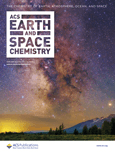
ACS Earth and Space Chemistry
Innovating Solutions for Planetary Challenges through ChemistryACS Earth and Space Chemistry is a leading journal published by the American Chemical Society, dedicated to advancing the interdisciplinary fields of atmospheric science, geochemistry, and planetary science. Since its inception in 2017, this journal has quickly established itself as a pivotal resource for researchers and professionals, boasting an impressive impact factor and securing its position in Q2 of the Scopus rankings for 2023 across its relevant categories. The journal publishes cutting-edge research articles, reviews, and commentaries that explore the chemical processes influencing Earth and space environments. By providing open access to invaluable research from experts around the globe, it encourages collaboration and dissemination of knowledge, crucial for addressing pressing environmental and planetary challenges. Situated in the heart of Washington, D.C., the journal's editorial office works diligently to ensure rigorous peer review and high-quality publications that meet the needs of its diverse audience, including scholars and students keen to stay abreast of developments in these dynamic fields.

EARTH AND PLANETARY SCIENCE LETTERS
Advancing the Frontiers of Earth and Planetary KnowledgeEARTH AND PLANETARY SCIENCE LETTERS, published by ELSEVIER, stands as a premier academic journal in the fields of Earth and Planetary Sciences, Geochemistry and Petrology, Geophysics, and Space and Planetary Science. Since its inception in 1966 and continuing to 2024, the journal has consistently maintained an impressive reputation, ranking in the top quartile (Q1) across several categories, highlighting its vital role in advancing scholarly research. With a Scopus ranking of #4 in both Geophysics and Geochemistry and Petrology, and a notable 97th percentile in multiple Earth sciences categories, EARTH AND PLANETARY SCIENCE LETTERS provides a platform for groundbreaking research, encouraging rigorous investigation and dissemination of knowledge. While not available as an Open Access publication, the journal remains highly accessible to academics and professionals worldwide, providing invaluable insights and fostering discussions that influence the future of Earth sciences. Whether you are a researcher, educator, or student, this journal is a crucial resource for understanding our planet and its processes.
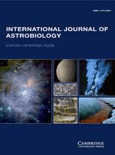
International Journal of Astrobiology
Bridging Disciplines to Illuminate the Cosmic Quest for LifeInternational Journal of Astrobiology, published by Cambridge University Press, stands as a pivotal resource in the interdisciplinary realm of astrobiology, merging insights from Earth and Planetary Sciences, Ecology, Evolution, Behavior, and Systematics, as well as Physics and Astronomy. With a solid impact factor denoting its relevance—particularly as a Q2 journal in Earth and Planetary Sciences and strong rankings in Ecology and Space studies—this journal provides a platform for cutting-edge research and groundbreaking discoveries that investigate the potential for life beyond Earth and the conditions that support its existence. Since its inception in 2002, the journal has aimed to foster a deeper understanding of astrobiological concepts through high-quality articles, reviews, and discussions, making it an indispensable tool for researchers, students, and professionals alike. Although it operates under a subscription model, the journal's commitment to advancing knowledge in astrobiology remains paramount, inviting diverse contributions that span the complexities of life in the universe.
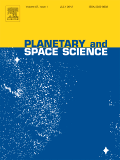
PLANETARY AND SPACE SCIENCE
Exploring the Cosmos: Unveiling the Mysteries of Planetary SciencePLANETARY AND SPACE SCIENCE is a leading journal dedicated to the interdisciplinary field of astral studies, encompassing both planetary science and the exploration of space. Published by PERGAMON-ELSEVIER SCIENCE LTD in the United Kingdom, this journal has been pivotal since its inception in 1959, continually contributing to advancements in research about planetary bodies, their atmospheres, and the broader cosmic landscape. With an impressive impact factor, PLANETARY AND SPACE SCIENCE ranks in the second quartile of Astronomy and Astrophysics and the third quartile in Space and Planetary Science as of 2023, showcasing its scholarly significance. The journal aims to provide a platform for the dissemination of cutting-edge research, emphasizing the critical role of space exploration and planetary studies in understanding our universe. Researchers, professionals, and students alike are encouraged to explore the wealth of knowledge presented in its pages, fostering a deeper comprehension of the phenomena that shapes both our solar system and beyond.
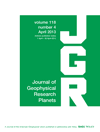
JOURNAL OF GEOPHYSICAL RESEARCH-PLANETS
Illuminating the Complexities of Planetary ProcessesThe JOURNAL OF GEOPHYSICAL RESEARCH-PLANETS, published by the American Geophysical Union, stands at the forefront of planetary science research, serving as an essential resource for scholars and practitioners exploring the complexities of planetary bodies within our solar system and beyond. With its ISSN 2169-9097 and E-ISSN 2169-9100, this respected journal has demonstrated a notable impact within the academic community, holding a prestigious Q1 ranking in multiple categories including Earth and Planetary Sciences, Geochemistry and Petrology, Geophysics, and Space and Planetary Science as of 2023. Its Scopus rankings further highlight its significance, placing it among the top echelons of Earth and planetary sciences—particularly as it ranks 12th in its broad category. While not an open access platform, the journal provides invaluable insights into planetary processes, geological phenomena, and the ongoing exploration of celestial environments, making it indispensable for researchers, professionals, and students dedicated to advancing our understanding of planetary systems. Established in 1996 and continuing to publish until 2024, the journal remains committed to fostering innovation and collaboration in this dynamic field of study.